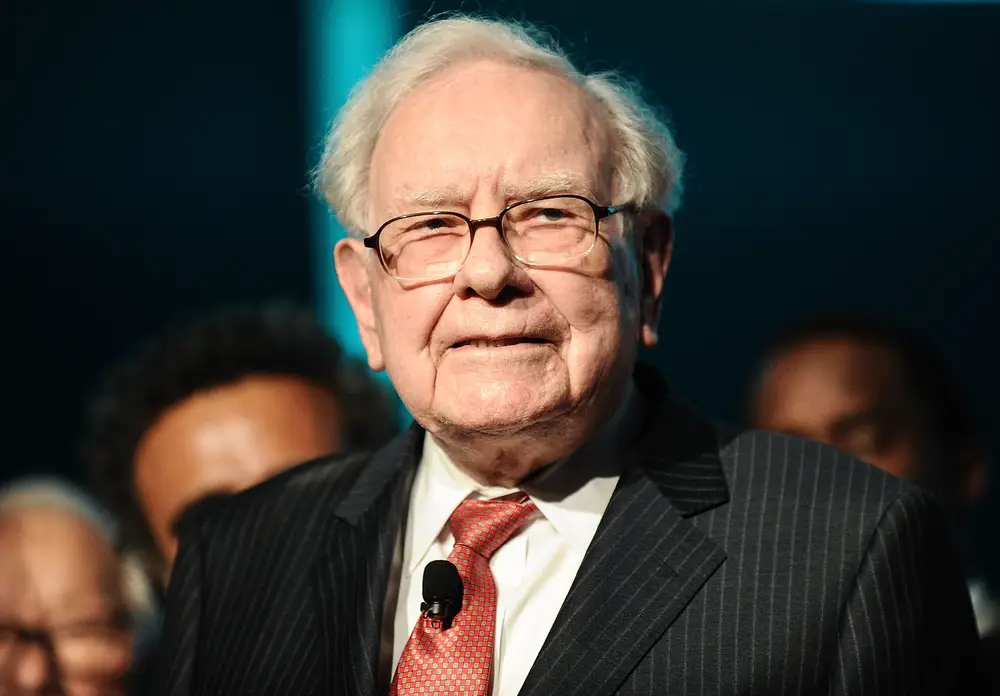There are 2 problems with Warren Buffett’s stock market valuation indicator

With the stock market trading at record highs, Warren Buffett’s favorite valuation indicator is also hitting new peaks.
The Buffett Indicator, which measures the total market capitalization of US stocks relative to US GDP, hit an all-time peak of about 209% on Monday, surpassing the record high of 200% reached in August 2021.
In other words, the US stock market’s total market cap of about $61 trillion, as measured by the Wilshire 5000 index, is more than double the annualized US GDP of about $29 trillion.
Bearish investors have been quick to point to the Buffett Indicator as yet another signal that the stock market is significantly overvalued and due for a correction.
Yet, research from Morgan Stanley suggests the gauge may not be the best valuation tool to follow.
Michael Mauboussin of Morgan Stanley’s Counterpoint Globlal highlighted two flaws in the famed Buffett Indicator, which Buffett introduced in a 2001 Forbes article.
“The first is that U.S. companies now get more of their sales from outside the U.S. than they did in past decades. GDP does not include those sales. That means the numerator, market capitalization, reflects a larger addressable market than what the denominator, GDP, captures,” Mauboussin said.
The gauge’s failure to capture foreign sales is a big deal, considering that about 40% of revenues derived from S&P 500 companies come from international markets. If those revenues were encapsulated in US GDP, then the Buffett Indicator wouldn’t be flashing as big of a warning sign as it is today.
The second flaw concerns the idea that the economy today is much different than it was in past eras.
“Second, GDP is arguably understated because it fails to measure accurately the quality of goods and services as well as the value of new goods and services. The rise of digitalization makes measurement today more challenging than in the past,” Mauboussin said.
Whereas the GDP-based stock market valuation indicator may have proven more accurate decades ago, when manufacturing was a bigger part of America’s economy, that’s not the case today.
Research from BlackRock and economist David Rosenberg recently has echoed this thinking.
“The equity market’s changing sectoral composition reflects the transformation taking hold. So, comparing today’s index to that of the past is like comparing apples to oranges,” BlackRock said last week.
Rosenberg, meanwhile, said last week he has recalibrated his long-standing bearish view due to the evolving nature of America’s tech-focused economy.
Mauboussin’s broad conclusion from his analysis of the Buffett ratio is that valuation measures that worked well in the past might not be suited to the current market.
“As with most measures, we need to be careful using it when we compare the present to the past,” Mauboussin said.
For what it’s worth, Buffett himself doesn’t think his coined stock market valuation indicator is an all-encompassing tell on whether it’s a good time to invest.
When asked at Berkshire Hathaway’s 2017 shareholder meeting about his thoughts on valuation metrics like the Buffett Indicator, the investor said:
“Every number has some degree of meaning,” Buffett said. “It means more sometimes than others. … And both of the things that you mentioned get bandied around a lot. It’s not that they’re unimportant. … They can be very important. Sometimes they can be almost totally unimportant. It’s just not quite as simple as having one or two formulas and then saying the market is undervalued or overvalued.”
Still, as Berkshire Hathaway is sitting on more than $300 billion in cash, investors and market observers have speculated that Buffett is concerned about current stock market valuations.






